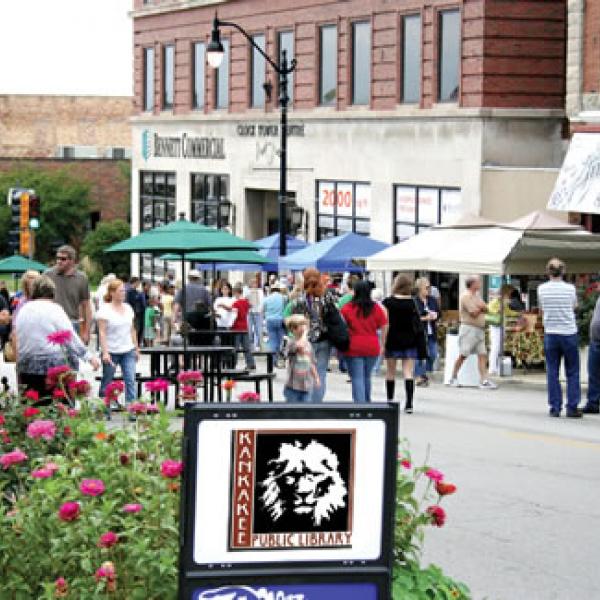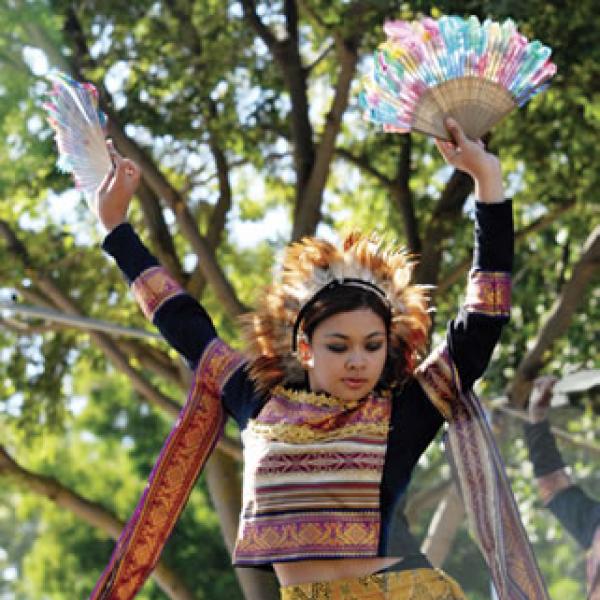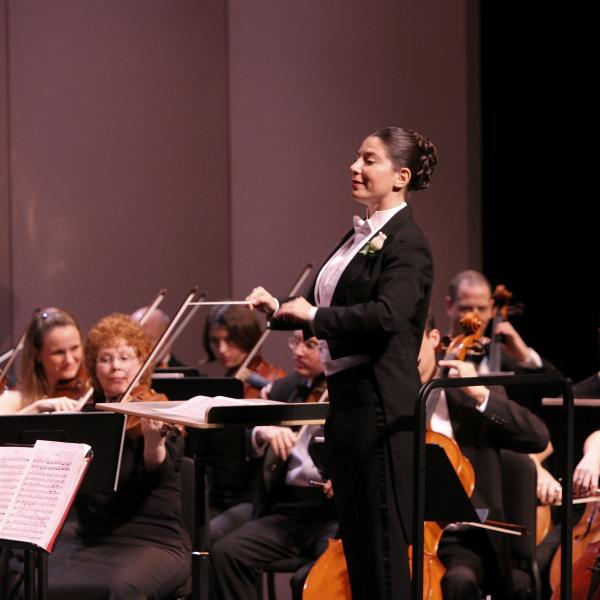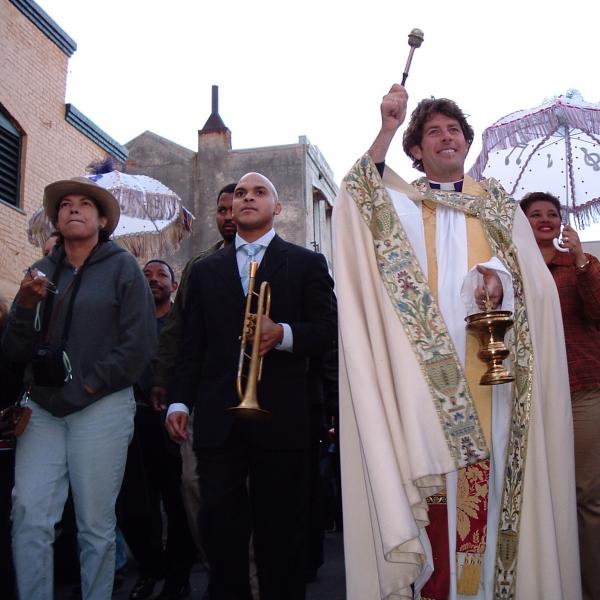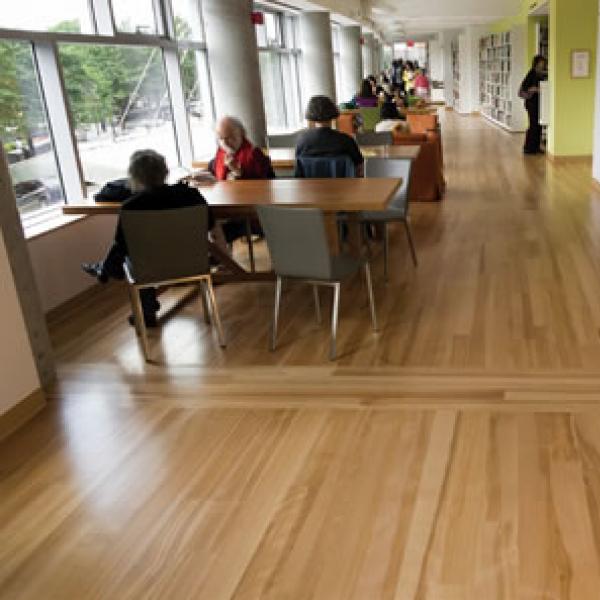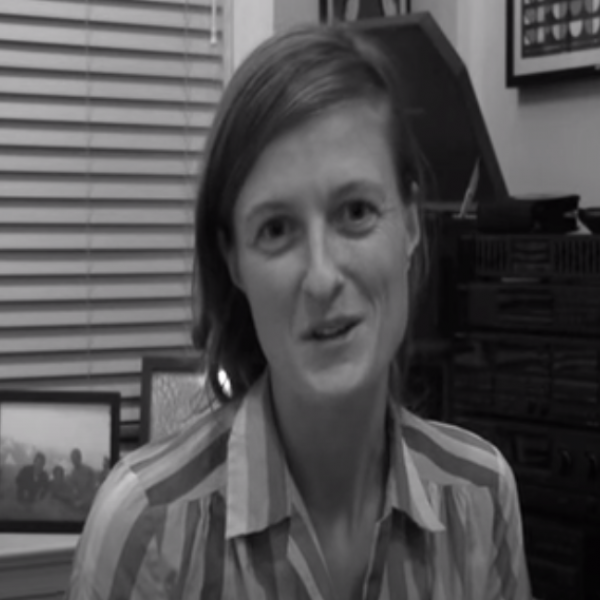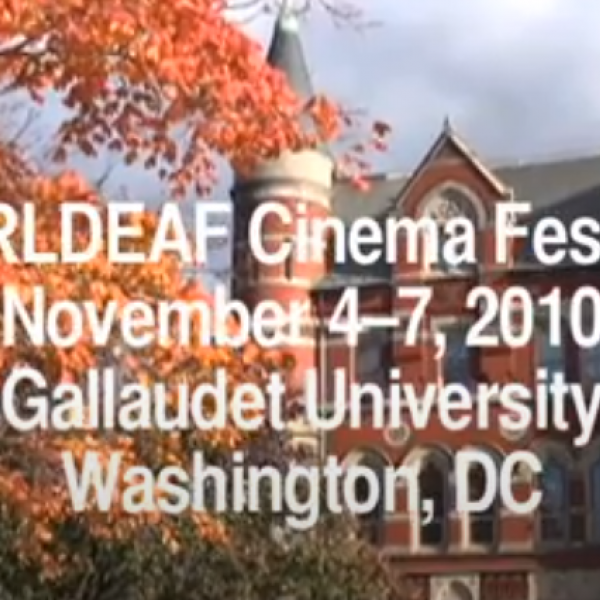Young at Art
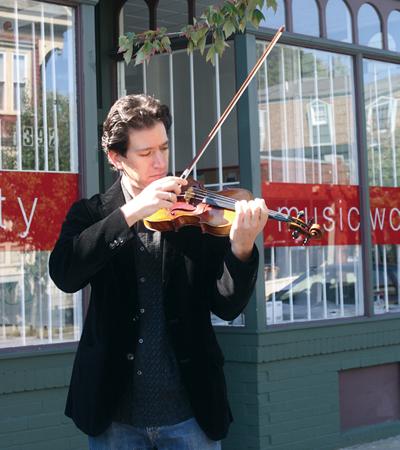
Founder Sebastian Ruth in front of the Community MusicWorks storefront in Providence, Rhode Island. Photo courtesy of the MacArthur Foundation
A storefront in a distressed urban neighborhood might seem an odd home for a classical string quartet, but the location’s a perfect fit for Providence, Rhode Island's Community MusicWorks (CMW). Founded in 1997 by violinist/violist Sebastian Ruth—a 2010 MacArthur Fellow—CMW is committed to the idea of "music as activism." That is to say, music not as isolated artistic interventions by outside groups, but rather as a community-rooted venture. The sound of music from CMW's front studio wafting through speakers onto the sidewalk is a perfect metaphor for its mission to integrate itself into the neighborhood it serves.
This philosophy of hands-on community engagement is not unusual among the city's arts groups like CMW, especially those that focus their work on the city's youth. CMW, and other youth-focused organizations like New Urban Arts and AS220 Youth, see young people as the key to cultivating and preserving the community's culture.
All of CMW's programs are connected to the permanent residency of the professional Providence String Quartet. CMW now has 10 professional resident musicians and more than 100 neighborhood children participating in its programs, which include not only instrument instruction but also leadership development and weekly enrichment classes. The organization also hosts a biannual Institute for Musicianship and Public Service, a gathering in Providence for musicians to learn what is really involved in building community-based programs.
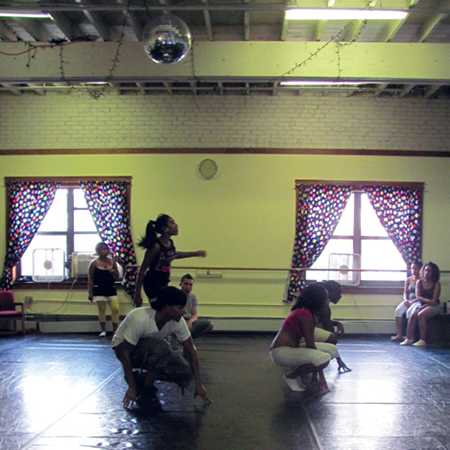
A class at the AS220 Youth Studio on Empire Street in Providence, Rhode Island. Photo by Linday King |
Ruth notes that young people who continue with the program over the years "develop a sense of their place in the community in a deep way." The students move from a level of involvement defined only by the time they spend in music lessons to a deeper engagement with fellow students and teachers to then performing in paid engagements before city dignitaries. They learn, according to Ruth, that "they have something meaningful to offer their city."
New Urban Arts, also housed in a Providence storefront, takes a multidisciplinary approach to its programs, many of which center on mentorships. For example, the Youth Mentorship in the Arts Program places artist mentors with small groups of high school students, while the Artist Mentor Professional Development Program prepares artist mentors for their work with young people. Each year, the students themselves interview and select 20 artist mentors from more than 50 applications for the program. The organization also presents 10 annual public events, such as a fashion show, with clothes designed, sewn, and modeled by the students.
According to Executive Director Jason Yoon, New Urban Arts fosters community by "bringing a diverse group of artists and young people together around artmaking as a social enterprise through hands-on making, learning from one another, and taking risks together." As that social enterprise develops and strengthens, students assume greater responsibility for their own creative practice. Yoon emphasized that the heart of the group’s programs is "how imagination and curiosity are a way to develop self-agency in whatever you do." For Yoon and his staff, the most valuable skill students can take away from their time with New Urban Arts is "the process of learning to think for yourself, and conduct your own learning, not wait for someone else to tell you what you’re going to do."
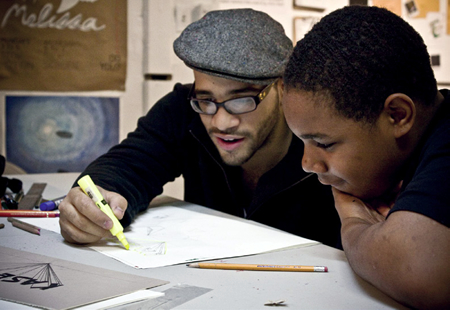
New Urban Arts artist mentor Abel Hernandez working on logo design with a student. Photo by Jesse Banks III |
AS220 Youth, on the other hand, focuses on a community within a community—incarcerated and post-incarcerated youth. Its parent organization—simply called AS220—is a community arts organization that supports live/work facilities for artists and artist residency programs, exhibition and performance spaces, and artmaking workshops and studios. AS220 Youth expands on that mission by creating and managing art programs for the juvenile justice facility at the Rhode Island Training School (RITS); it is the longest-running arts program in a juvenile detention center in the country.
Comprising a blend of arts education and supportive services, AS220 Youth’s self-paced arts programs now serve 330 youth at three different sites. Nearly half of the RITS detainees participate in AS220 Youth programs and, in 2009, 60 young people continued with the program after completing their terms at RITS.
AS220 Youth boasts an impressive record of projects: the Rhode Show, AS220’s hip-hop group, has toured nationally and produced two full-length CDs; in 2010 youth artists exhibited at seven gallery shows hosted at outside venues; and the Rhode Island Department of Health hired young artists from the program to create a youth-focused, anti-tobacco public service advertising campaign.
When asked why the arts are uniquely positioned to work with this population AS220 Youth Director Anne Kugler said, "We couldn't have the relationships we have with the kids without the arts. It's a way of connecting with very, very disconnected, hard-to-engage youth in a way that doesn’t feel like a program with adults telling them what to do." The young people are able to see in the artist mentors a model for living and a way of being creative. "It is a revelation for them."
While Community MusicWorks, New Urban Arts, and AS220 Youth make a powerful impact on their own, each organization also appreciates the power of partnership. Along with Everett Dance Theatre, Manton Avenue Project, and Providence CityArts for Youth, they comprise Providence Youth Arts Collaborative (PYAC), a collective formed in 2004 to give the executive directors of the six member organizations a forum in which to share best practices and collaborate on fundraising and advocacy efforts. Exchanges among the members’ teaching artists and students help to inform and inspire them.
The partnership allows students and artists a chance to share their work and broaden conversation around issues of arts and community to include a much larger audience. One example is Imagining Art + Social Change, a two-day conference that PYAC co-presented with Community MusicWorks in March 2008. Through panels, group conversations, site visits, performances, and exhibitions, participants examined the intersection of and possibilities for art and social change.
Another event—Roots and Rituals: A Creative Day for Creative People—in May 2010 was billed as an opportunity to make cool stuff, learn about local youth arts organizations, and see expressive performances. Created entirely by the PYAC students—and supported by a 2010 NEA Access to Artistic Excellence grant—the event featured writing, visual arts, dance, and improv workshops as well as a drop-in story booth.
Community MusicWorks, New Urban Arts, and AS220 Youth are also partnering with the City of Providence on a Transportation Corridors to Livable Communities project. With the support of a $910,000 grant from the Department of Housing and Urban Development, the project will focus on placing arts and cultural opportunities along the city's key transportation corridors and into neighborhood-based community hubs.
In reflecting on what these youth arts programs have and continue to accomplish for the City of Providence, Lynne McCormick, executive director of the city’s Department of Art, Culture + Tourism noted, "We're just so proud of these organizations and the contributions they are making to the development of our city’s youth. They've literally changed the course of young peoples' lives by providing access to exceptional arts learning experiences and cultivating meaningful relationships with artists and mentors."


